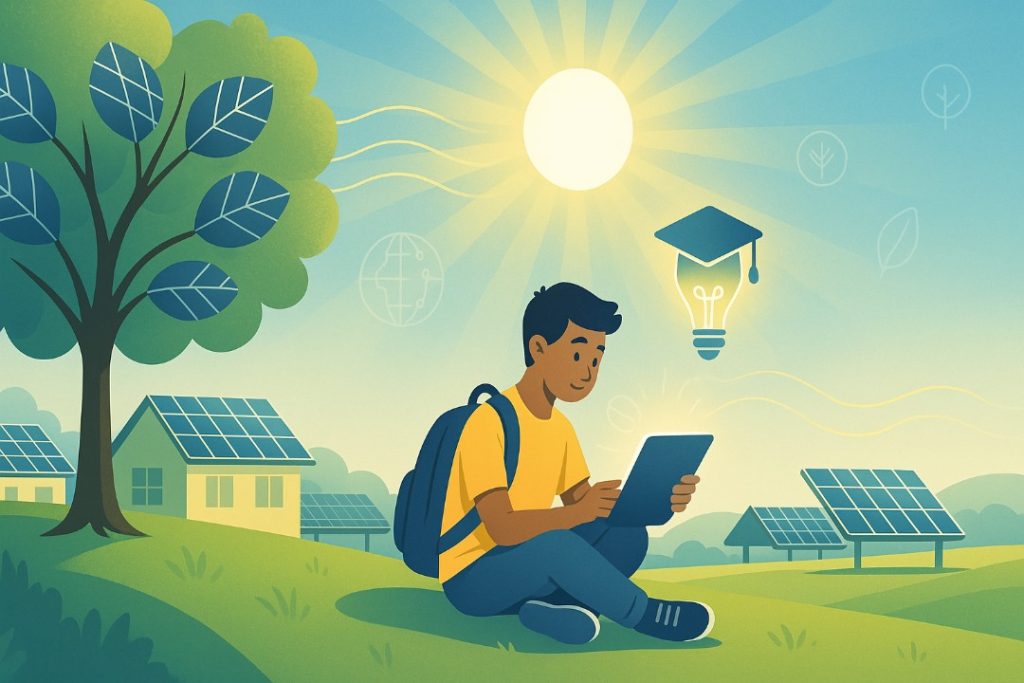
Helion Energy Solution – Solar Education Hub
Welcome to the Solar Education Hub — your trusted guide to understanding solar energy, sustainability, and the future of clean power. At Helion Energy Solution, we believe that knowledge is the first step toward action. Whether you’re a homeowner, business owner, student, policymaker, or simply curious, this hub is designed to empower you with practical, in-depth, and forward-thinking insights.
Introduction to Solar Energy
Solar energy is the most abundant and renewable energy source on Earth. Every hour, the sun delivers enough energy to power the world for an entire year. Harnessing this energy through modern solar technologies is becoming more efficient, affordable, and vital to combating climate change.
Solar power contributes to cleaner air, reduced fossil fuel use, and greater energy independence. It plays a key role in the global shift toward a sustainable, low-carbon future.
How Solar Power Works
Solar panels, also known as photovoltaic (PV) modules, convert sunlight into direct current (DC) electricity. Inverters then transform this into alternating current (AC), which is compatible with standard electrical systems. Energy storage systems, like batteries, allow users to store excess energy for nighttime or cloudy days. Monitoring systems help track energy production and optimize efficiency.
Types of Solar Technologies
Solar comes in various forms to suit different needs:
Storage Solutions & Battery Innovations
As solar energy adoption grows, reliable storage becomes essential. Advanced battery technologies now include:
These innovations offer flexibility, especially for off-grid and backup power applications.
Grid-Tied, Off-Grid and Hybrid Systems
Financial Incentives & Solar Policies
Solar energy is more accessible than ever, thanks to various incentives and supportive policies. These may include:
These incentives significantly reduce installation costs and improve return on investment.
Solar for Homes
Commercial & Industrial Solar
Solar energy for businesses is a strategic investment. It reduces operational costs, stabilizes long-term energy expenses, supports ESG goals, and demonstrates environmental responsibility. Solutions can be scaled for warehouses, factories, office buildings, schools, and farms.
The Global Solar Landscape
Solar is expanding worldwide at record speeds:
Solar and Sustainability
Solar energy is central to the clean energy transition. It emits no greenhouse gases during operation and uses minimal water. Sustainability efforts also focus on panel recycling, ethical sourcing of materials, and integration with other green technologies like electric vehicles and smart homes.
Common Solar Myths Debunked
There are many misconceptions around solar energy:
“Solar is too expensive” — costs have dropped by over 80% in the past decade.
“Solar doesn’t work in cloudy areas” — panels still generate energy in diffused light.
“Solar requires a lot of maintenance” — modern systems are mostly self-sustaining.
“You must have a battery to go solar” — grid-tied systems work without storage.
Tools & Resources
To support your journey, Helion Energy Solution offers a growing library of tools and learning aids, including:
The Future of Solar
The solar industry is evolving rapidly:
The future is not just bright — it’s solar-powered.
Frequently Asked Questions
What is the lifespan of a solar panel?
Most panels last 25–30 years, with performance guarantees.
Can renters benefit from solar?
Yes — community solar programs and portable panels are great options.
Will solar work in a power outage?
Only with a hybrid or battery-backed system. Grid-tied systems automatically shut down for safety.
Get Started with Helion Energy Solution
Whether you’re just beginning your solar journey or ready to make a change, Helion Energy Solution is here to support you with expert advice, custom solutions, and end-to-end service.
